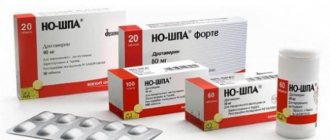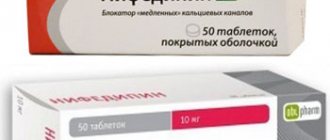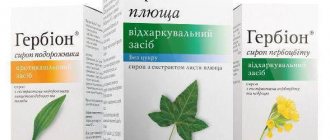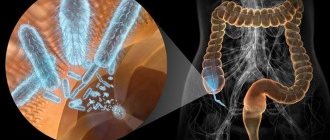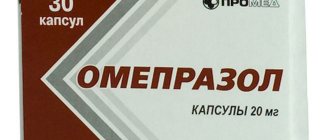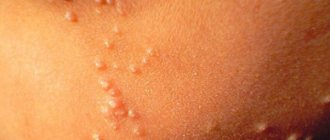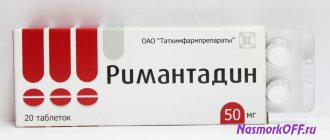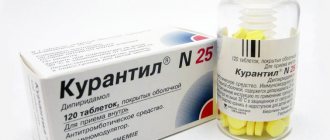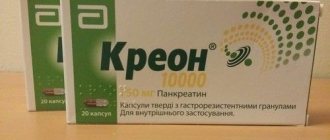In this article, we will look at a modern drug from the group of hepatoprotectors Phosphogliv, the course of treatment, how many days it needs to be taken, instructions and side effects. These questions are of great interest to patients who have a history of liver and biliary tract diseases. The drug was developed on the basis of existing ones, it was improved and passed all the necessary clinical trials. Phosphogliv is a more modern analogue of the drug Essentiale Forte.
The use of Phosphogliv for the prevention of liver diseases is also not excluded. The drug copes well with its functions of restoring liver cells and is suitable for use in children over 12 years of age and adults.
Overdose
Currently, there are no cases of overdose of Phosphogliv.
Release forms
10 - contour cell packaging (2) - cardboard packs. 10 - contour cell packaging (3) - cardboard packs. 10 - contour cell packaging (5) - cardboard packs. 50 capsules per pack Lyophilisate 2.5 g - 5 bottles per pack. Lyophilisate 2.5 g - 5 bottles per pack. solvent - water for injection
Description of the dosage form
hard gelatin capsules No. 0, capsule body – orange, cap – black. The contents of the capsule are granular powder from white with a slightly yellowish tint to light yellow, with a weak specific odor. Hard gelatin capsules, No. 0, with a brown body and cap; the contents of the capsules are an oily paste-like mass from light yellow to orange-brown in color, with a weak specific odor. Lyophilisate for the preparation of a solution for intravenous administration in the form of a mass from white to light yellow. lyophilisate for the preparation of solution for intravenous administration
Compound
lipoid PPL-400 400 mg phospholipids (main component - phosphatidylcholine 73-79%) 300 mg sodium glycyrrhizinate 65 mg Excipients: butylated hydroxytoluene, ethanol (luxury or extra grade), sunflower oil or corn oil. Composition of the capsule shell: titanium dioxide, red iron oxide dye, black iron oxide dye, yellow iron oxide dye, gelatin Composition per capsule. Active ingredients: Phospholipids (Lipoid C 80) (calculated as 100% substance) (main component phosphatidylcholine 73-79%) - 65 mg, sodium glycyrrhizinate (trisodium salt of glycyrrhizic acid) - 35 mg. Excipients: microcrystalline cellulose - 141.2 mg, calcium carbonate - 204.7 mg, calcium stearate - 0.9 mg, talc - 7.7 mg, colloidal silicon dioxide (Aerosil) - 5.5 mg, hard gelatin capsules - 96.0 mg. Phospholipids - 500 mg; Sodium Glycyrrhizinate - 200 mg; Excipients: maltose phospholipids 500 mg sodium glycyrrhizinate 200 mg Excipients: maltose SOLVENT WATER D/IN
Hepatocytes are directly responsible for the functionality of the hepatobiliary system. They break down carbohydrates, synthesize bile salts and cholesterol, and initiate the production and passage of bile.
To maintain or restore the functionality of hepatocytes, patients should use essential phospholipids. One of the best hepatoprotectors in this segment is Phosphogliv.
The medicine is available in the form of capsules and ampoules. The manufacturer of the drug is the Research Institute of Biomedical Chemistry of the Russian Academy of Medical Sciences named after V.N. Orekhovich (Russia). Also, production has been established by Pharmstandard-Medicines OJSC. Phosphogliv in ampoules costs about 1400-1600 rubles (2.5 bottles No. 5). The price of capsules of the same name is 1200 rubles per package. The hepatoprotector is available without a prescription.
Phosphogliv Forte and Phosphogliv what is the difference
Both drugs are available in capsule form and contain the same composition of active ingredients. It contains phosphatidylcholine and sodium salt of glycyrrhizic acid. The difference between Phosphogliv and Phosphogliv Forte is the number of components. Compared to Phosphogliv, Forte has more:
- sodium glycyrrhizinate 30 mg,
- phosphatidylchloroline 4.6 times.
Composition of capsules
| Component | Phosphogliv | Phosphogliv Forte |
| Phospholipids: | 65 mg | 300 mg |
| Sodium glycyrrhizinate: | 35 mg | 65 mg |
| Lipoid PPL-400: | — | 400 |
Characteristics of active ingredients
Licorice root has been traditionally used in Chinese, Indian and ancient medicine. One of the main components contained in it is the triterpene glycoside glycyrrhizin. As it turned out, it has many useful properties, namely:
- antiviral activity,
- immunomodulatory effect,
- antioxidant effect,
- membranotropic action,
which make it indispensable in the treatment of liver diseases.
In addition, the protective effect of glycyrrhizic acid against fatty liver disease has been established. When the level of free fatty acids in the blood plasma increases, biochemical processes are triggered in the liver, leading to the accumulation of fat, which has no place there at all. Glycyrinates prevent fat accumulation and protect hepatocytes from apoptotic death.
Destruction of the integrity of the cell membrane leads to a number of disorders of the liver, nervous system and other organs. Phosphatidylcholine is one of the 7 main phospholipids involved in the construction of cell membranes. It accounts for 40 to 55% of the total amount of membrane phospholipids. In order to restore cell mass during regeneration processes, the liver requires building material. It is provided by the drug Phosphogliv in the form of phosphatidylcholine.
As experimental studies show, phosphatidylcholine has a whole range of biological properties, including:
- antiviral,
- anti-inflammatory,
- antioxidant,
- antifibrotic activity.
This substance can directly protect liver cells from toxic chemicals such as ethanol and carbon tetrachloride.
In one clinical trial, patients with hepatitis A and B were given 1.8 g of phosphatidylcholine daily as part of their usual therapy. It turned out that in this group of patients there were fewer relapses, and liver function normalized faster compared to other subjects. In another study, patients with chronic hepatitis C took 3 g of phosphatidylcholine per day. After the course of treatment, almost all patients experienced a decrease in the severity of symptoms, and in some, the histological signs of the disease even disappeared.
Characteristics of excipients
Another thing that distinguishes Phosphogliv from Phosphogliv Forte is the set of excipients. In Phosphogliv Forte these are:
- ethanol, vegetable oils, butylated hydroxytoluene (excipients),
- titanium dioxide, dyes, gelatin (capsule shell).
In Phosphogliv, the capsule shell consists of almost the same chemical compounds, but the fillers are different: microcrystalline cellulose, calcium carbonate and stearate, talc, aerosil.
The Phosphogliv line of drugs is produced by Pharmstandard. There are price differences between drugs. 50 capsules of Phosphogliv cost from 507 to 530 rubles. The same package of Phosphogliv Forte will cost about 1.7 times more: from 882 to 959 rubles.
Phosphogliv or Phosphogliv Forte - which is better to use to solve your “liver” problem? Of course, it is better to address this question to a specialist. After examination, a hepatologist or gastroenterologist will help you choose the right drug and prescribe a course of treatment.
Other forms and analogues of Phosphogliv
The pharmaceutical company produces medicine not only in the form of injections. On pharmacy windows you can see:
- Phosphogliv capsules (Pharmstandard). 1 package contains 30, 50, 100, 200 and 300 pieces. They are gelatinous and contain a light yellow powder inside.
- Phosphogliv Forte capsules (Pharmstandard). The dose of active components here is higher than in other forms.
The therapeutic effect of the capsules is achieved due to exactly the same active ingredients as those of the lyophilisate. They have the same indications, contraindications and side effects. Only the treatment regimen may differ. After taking it, it is recommended to drink it with water.
What injections can replace Phosphogliv? There are no injections with exactly the same composition. But Phosphogliv has plenty of analogues in action. These include:
- Heptor (Russia). Available in the form of a lyophilisate in 400 mg bottles. The active substance is ademetionine. Used intramuscularly and intravenously. Acts not only as a hepaprotector, but also as a psychotropic medicine.
- Heptral (Italy). Similar in composition, action and use to Heptor.
- Laennec (Japan). It is an immunomodulatory and hepatoprotective drug. The main component is human placenta hydrolyzate. Available in the form of a solution for injection. 1 ampoule contains 2 ml.
- Remaxol (Russia). The main components of the injection solution are succinic acid, meglumine, methionine, riboxin and nicotinamide. The advantage of the drug is its low price.
- Essentiale N (France). The main components are phospholipids. The solution for injection is available in 5 ml bottles. Intended for intravenous administration only.
- Gepa-Merz (Germany). Available in the form of a concentrate for the preparation of infusions. Ornithine plays the main role in the therapeutic effect.
- Berlition 600 (Germany). The ampoules contain thioctic acid.
The injection solution is usually used during an exacerbation. To maintain the condition and prevent it, specialists most often choose capsules and tablets.
Patients' opinions
Nina, 49 years old, Moscow
I took Phosphogliv a year ago to restore my liver after a cold and taking pills. After it, I experienced severe nausea (I couldn’t even look at food) and heaviness in my right side. I went to the doctor, he sent me for an ultrasound and tests. Based on the results of the examination, he prescribed a course of Phosphogliv Forte. After starting treatment, the unpleasant gastrointestinal symptoms disappeared and I gradually began to eat normally. After completing the course, I checked my liver again and the tests were normal. The product is effective, I take it periodically for preventive purposes.
Victoria, 52 years old, Irkutsk
Forte was prescribed by a doctor for the treatment of chronic hepatitis. The drug helped quickly: the pain in the right side went away in a few days. When I wanted to buy another package of medicine, the pharmacist advised not Forte, but Phosphogliv, especially since purchasing it did not require a doctor’s prescription. I didn’t feel any difference in the effect. I liked the second method better. Its price is lower and there are more tablets in the package. After completing the course, I additionally lost weight (a little) and improved my digestion.
Evgeniy, 38 years old, Naberezhnye Chelny
Due to problems with the biliary tract, heaviness and nausea are often tormented after eating. I save myself with Phosphogliv. By taking 1 tablet before meals, I can eat high-calorie and fatty foods. But I didn’t like the medicine Forte, although it has the same mechanism of action. After drinking it for 2 days, I began to experience side symptoms: nausea and vomiting. After consulting with a doctor, I learned that it contains a higher concentration of active substances and poses a greater risk of adverse reactions. Therefore, I started taking Phosphogliv again.
pharmachologic effect
Combined remedy. It has membrane-stabilizing, hepatoprotective and antiviral effects.
Phosphatidylcholine (the active substance of phospholipids) is the main structural element of cellular and intracellular membranes, capable of restoring their structure and function when damaged, providing a cytoprotective effect. Normalizes protein and lipid metabolism, prevents the loss of enzymes and other active substances by hepatocytes, restores the detoxifying function of the liver, inhibits the formation of connective tissue, reducing the risk of fibrosis and cirrhosis of the liver.
Glycyrrhizic acid has an anti-inflammatory effect, suppresses the reproduction of viruses in the liver and other organs by stimulating the production of interferons, increasing phagocytosis, and increasing the activity of natural killer cells. It has a hepatoprotective effect due to its antioxidant and membrane-stabilizing activity. Potentiates the effect of endogenous glucocorticosteroids, providing anti-inflammatory and antiallergic effects in non-infectious liver lesions.
In case of skin lesions, due to the membrane-stabilizing and anti-inflammatory effects of the components, it limits the spread of the process and promotes regression of the disease.
Pharmacokinetics.
Phosphatidylcholine
More than 90% of phospholipids taken orally are absorbed in the small intestine. Most of them are cleaved by phospholipase A to 1-acetyl-lysophosphatidylcholine, 50% of which is reverse acetylated into polyunsaturated phosphatidylcholine during absorption in the intestinal mucosa. Polyunsaturated
Phosphatidylcholine enters the bloodstream through the lymph, from where it mainly enters the liver in the form associated with high-density lipoproteins. Pharmacokinetics in humans was studied using radiolabeled dilenoleyl phosphatidylcholine - 3H (choline moiety) and 14C (linoleic acid moiety). The maximum concentration of 3H is achieved after 6-24 hours, amounting to 19.9% of the prescribed dose; 14C - after 4-12 hours, amounting to 27.9%. The half-life of the choline component is 66 hours, the linoleic acid residue is 32 hours. In feces, 2% 3H and 4.5% - 14C are found in urine - 6% 3H and a minimal amount of 14C. Both isotopes are absorbed in the intestine by more than 90%.
Glycyrrhizic acid
After oral administration in the intestine, under the influence of the enzyme β-glucuronidase, produced by bacteria of normal microflora, an active metabolite is formed from glycyrrhizic acid - β-glycyrrhetic acid, which is absorbed into the systemic circulation. In the blood, β-glycyrrhetic acid binds to albumin and is almost completely transported to the liver. The excretion of β-glycyrrhetic acid occurs predominantly in bile, with residual amounts in urine.
According to experimental data, phospholipids improve the lipophilic properties of glycyrrhizic acid, increasing the intensity and rate of its absorption by more than 2 times.
Phosphogliv
Phosphogliv is a hepatoprotective drug of plant origin. Composition: phosphatidylcholine and glycyrrhizic acid. The drug restores damaged membranes of liver cells - hepatocytes.
Composition and functions of the drug
The drug is made on a plant basis. The pharmacological effect of the drug is due to two active substances included in its composition:
- Plant phospholipid - phosphatidylcholine;
- Glycyrrhizic acid.
The lipid component is present in the membrane of any healthy cell. Phosphatidylcholine is integrated into damaged areas of the hepatocyte cell membrane and restores its integrity. Other effects of phosphatidylcholine:
- Regulation of metabolism;
- Detoxification effect;
- Decreased connective tissue production.
Glycyrrhizic acid. The main hepatoprotective effect of this substance is associated with its antioxidant properties. Glycyrrhizic acid minimizes the negative effects of free radicals on liver cells. Other effects of glycyrrhizic acid:
- Anti-inflammatory properties;
- Antiviral activity;
- Increasing local immunity.
In addition to the main active substances, the drug contains additional substances:
- Powder base;
- Anti-caking agents;
- Dyes.
General therapeutic effect of Phosphogliv
The hepatoprotective effect is determined by the following properties:
- Antiviral activity;
- Ability to enhance immunity;
- Anti-inflammatory effect;
- Antioxidant properties.
Phosphogliv is able to repair damage in the cell wall of hepatocytes. When using Phosphogliv, the detoxification ability of the liver increases.
Diseases for which Phosphogliv is effective
- Non-inflammatory liver diseases (hepatosis) - fatty degeneration;
- Liver damage due to long-term use of toxic substances - alcohol substitutes, medications.
- Inflammatory liver diseases (hepatitis) - viral and reactive.
- Cirrhosis of the liver.
- Psoriasis;
- Atopic dermatitis;
- Neurodermatitis;
- Scleroderma.
In addition to liver diseases, Phosphogliv can be used to prevent liver damage in certain systemic diseases:
There are also infectious diseases that are accompanied by liver damage and require the use of hepatoprotectors:
- Typhoid fever;
- Leptospirosis;
- Hemorrhagic fevers;
- Helminthic infestations.
Release form of the drug
The drug is produced in the form of hard gelatin capsules. The contents of the capsules are white granular powder.
Phosphogliv is available in different packaging - packs of 10, 30, 50 and 100 capsules. There is also an injection form for intravenous administration.
Who can take Phosphogliv
The drug is approved for use in adults and children over 12 years of age.
Who should not take Phosphogliv?
Due to the immunostimulating effect of the drug, it is not recommended for use in pregnant women.
Method of administration
The dosage of the drug for the treatment of uncomplicated diseases is 2 capsules 4 times a day with meals. In some cases, it is possible to increase the dose.
Side effects
All undesirable manifestations that may occur during treatment with Phosphogliv are associated with individual intolerance to the components of the drug:
- Hives;
- Swelling of the nasal mucosa;
- Lacrimation and conjunctivitis.
Storage conditions
The drug should be stored in a dark place. Temperature - no higher than 20*C.
- Septrin
- Essliver Forte
- Stodal
- Tongkat Ali
- Ovesol
lekarstvennik.ru
Composition and active substance
Phosphogliv contains:
Phosphogliv
Capsules
1 capsule contains:
Active ingredients: Phospholipids (Lipoid C 80) (calculated as 100% substance) (main component phosphatidylcholine 73-79%) - 65 mg, sodium glycyrrhizinate (trisodium salt of glycyrrhizic acid) - 35 mg.
Excipients: microcrystalline cellulose - 141.2 mg, calcium carbonate - 204.7 mg, calcium stearate - 0.9 mg, talc - 7.7 mg, colloidal silicon dioxide (Aerosil) - 5.5 mg, hard gelatin capsules - 96.0 mg.
Phosphogliv
forte Capsules
1 capsule forte contains:
Active ingredients: lipoid PPL-400 400 mg, phospholipids (main component - phosphatidylcholine 73-79%) 300 mg, sodium glycyrrhizinate 65 mg
Excipients: butylated hydroxytoluene, ethanol (luxury or extra grade), sunflower oil or corn oil
Composition of the capsule shell: titanium dioxide, red iron oxide dye, black iron oxide dye, yellow iron oxide dye, gelatin.
Phosphogliv
Lyophilisate for the preparation of solution for intravenous administration
1 bottle of lyophilisate contains:
Active ingredients: phospholipid - 500 mg, glycirate - 200 mg.
What is the difference between Phosphogliv and Phosphogliv Forte?
If there is one thing that distinguishes these drugs, it is the dosage of the active ingredients present here. In the case of the standard version of this drug, the concentration of phosphatidylcholine and lipoid in 1 capsule will be only 65 mg. If we talk about Phosphogliv Forte, then the concentration of phosphatidylcholine and lipoid in 1 capsule is already 300 mg.
By the way, in addition, the latter also contains a phospholipid. A similar situation is also observed with another, no less important, active substance. It is Sodium glycyrrhizinate, which in 1 capsule of classic Phosphogliv contains 35 mg, while in Phosphogliv Forte it is already 65 mg. Thus, in total and in comparison with the classic type of drug we are considering today, Phosphogliv Fort includes 4.5 times more phospholipids. In addition, it also contains 2 times more trisodium siliglycyrrhizic acid.
Pharmacokinetics
Phosphatidylcholine
More than 90% of ingested phospholipids are absorbed from the small intestine. Most of it is cleaved by phospholipase A to 1-acetyl-lysophosphatidylcholine, 50% of which is reverse acetylated into polyunsaturated phosphatidylcholine during absorption in the intestinal mucosa. Polyunsaturated phosphatidylcholine enters the bloodstream through the lymph, from where it mainly enters the liver in the form of high-density lipoproteins.
Pharmacokinetics in humans was studied using radiolabeled dilenoleylphosphatidylcholine - 3 H (choline moiety) and 14 C (linoleic acid moiety). Cmax 3H is achieved after 6-24 hours, accounting for 19.9% of the prescribed dose; 14 C - after 4-12 hours, amounting to 27.9%.
T1/2 of the choline component is 66 hours, the remainder of linoleic acid is 32 hours. 2% 3H and 4.5% - 14C are found in feces; in urine - 6% 3H and a minimum amount of 14C.
Both isotopes are absorbed in the intestine by more than 90%.
Glycyrrhizic acid
After oral administration in the intestine, under the influence of the enzyme β-glucuronidase, produced by bacteria of normal microflora, an active metabolite is formed from glycyrrhizic acid - β-glycyrrhetic acid, which is absorbed into the systemic circulation. In the blood, β-glycyrrhetic acid binds to and is almost completely transported to the liver. The excretion of β-glycyrrhetic acid occurs predominantly in bile, with residual amounts in urine.
According to experimental data, phospholipids improve the lipophilic properties of glycyrrhizic acid, increasing the intensity and rate of its absorption by more than 2 times.
Phosphogliv or Essentiale
Both Essentiale and Phosphogliv are hepatoprotectors and contain phospholipids as active components. At the same time, Essentiale contains exclusively phospholipids, and Phosphogliv also contains glycyrrhizic acid. This acid is a steroid saponin in its chemical structure, that is, it is close in structure to the hormones of the human adrenal cortex (the properties of glycyrrhizic acid and its effect on the liver are described above). However, this difference in the composition of drugs is not always a criterion for choosing one of them. Each person's body is unique, and one patient will be better suited to Phosphogliv, and another - Essentiale. Therefore, before choosing a hepatoprotector and its dosage, you should consult with your doctor.
It should also be noted that Essentiale contains lipid peroxidation products, while Phosphogliv does not contain these compounds. More information about the drug Essentiale
Contraindications and side effects
Phosphogliv is contraindicated in case of hypersensitivity to its active or auxiliary components. The drug, available in capsule form, is also not prescribed to children under the age of 12 years.
The list of strict contraindications includes decompensated arterial hypertension, antiphospholipid syndrome, lactation and pregnancy. During treatment, it is strictly forbidden to drink alcoholic beverages, as ethanol reduces the effectiveness of therapy.
Please note that Phosphogliv lyophilisate is strictly prohibited from being mixed with other solutions for intravenous administration, including glucose solution and isotonics. If blood pressure increases after starting to take capsules or injections, then therapy should be interrupted.
Side effects:
- Allergic reactions - itching, burning, skin rash, urticaria, Quincke's edema. In case of overdose/antiphospholipid syndrome, even anaphylactic reactions are possible.
- Digestive disorders. At the initial stages of therapy, approximately 2% of patients experienced dyspeptic disorders (nausea, diarrhea, constipation, flatulence), bitterness in the mouth, discomfort in the right hypochondrium, and abdominal pain. Bloating is possible.
- The appearance of peripheral edema.
- Increased blood pressure. If the patient has decompensated hypertension, a hypertensive crisis may develop.
An overdose is dangerous, because glycyrrhizic acid can have a so-called “pseudocorticosteroid” effect. This means that the body can sharply increase the content of glucocorticoids and mineralocorticoids in the blood, as a result of which sodium retention occurs, the amount of potassium decreases, blood pressure increases, fluid retention and swelling are observed.
Use during pregnancy
Phosphogliv capsules and lyophilisate are contraindicated for use by pregnant women.
However, women suffering from chronic hepatitis or hepatosis are prescribed a course of Phosphogliv, if necessary. But in such situations, the benefits of using the drug should exceed all possible side effects. Infectious disease doctors in developed countries in Europe and the USA prefer not to prescribe Phosphogliv during pregnancy, since this drug activates immune mechanisms. Normally, a pregnant woman's immunity is slightly reduced, which is necessary for bearing a fetus. After all, if the immune system remains normal, then the woman will not be able to bear a child, since the immune system will cause miscarriages, considering the fetus to be some kind of foreign genetic material. That is, increased activity of the immune system causes an increased risk of miscarriage. That is why it is better not to use Phosphogliv during pregnancy.
Side effects
The safety of Phosphogliv is high - experts talk about the so-called favorable safety profile. Studies of the drug have proven that side effects occur rarely - in 1 person out of 10,000.
But this one may develop allergic urticaria when given injections. When the drug is discontinued, it goes away immediately. If you exceed the daily dosage, sodium and fluids are retained in the tissues. They provoke:
- swelling;
- high blood pressure;
- hypokalemia, reduced concentration of ions in the blood.
To get rid of these symptoms, it is recommended to reduce the dosage or prescribe spironolactone. It is a diuretic that does not flush potassium from the body. Its daily dose is 50-100 mg.
Phosphogliv does not affect psychomotor reactions and concentration. So, when treating the liver, you can confidently drive a car or operate any other complex mechanism.
Heptral or Phosphogliv
According to the latest orders of the Ministry of Health of the Russian Federation, Phosphogliv is one of the standard drugs for providing specialized medical care for acute hepatitis C of severe and moderate severity, as well as for chronic hepatitis C. In turn, Heptral is not included in this list of drugs. Thus, we can conclude that for chronic hepatitis C, as well as for severe and moderate acute hepatitis C, Phosphogliv should be preferred.
At the same time, Heptral is a more effective drug for the treatment of ALD and toxic hepatitis. Therefore, for these diseases, Heptral should be preferred.
Otherwise, the drugs Heptral and Phosphogliv are comparable in terms of therapeutic effectiveness. Therefore, you can use any drug that, for some subjective reason, a person likes more. However, we should not forget that each person’s body is individual, so Heptral may be well suited for one patient, while Phosphogliv may be suitable for another. More information about the drug Heptral
Indications for use Phosphogliv
What does Phosphogliv help with? The drug Phosphogliv is used to treat most pathological disorders of liver function, both infectious and non-infectious.
Indications for the use of the drug Phosphogliv are diseases such as:
- viral hepatitis A, B, C, D in acute and chronic forms;
- steatohepatosis,
- steatohepatitis,
- cirrhosis of the liver,
- liver damage due to chronic diseases of the cardiovascular system, respiratory system, diabetes, tuberculosis;
- fatty hepatosis (fatty liver degeneration),
- alcoholic liver damage caused by alcoholism,
- drug-induced liver damage,
- liver damage as a result of drug use;
- liver failure in acute and chronic forms,
- intoxication of the body,
- psoriasis.
Lyophysilate and capsules significantly improve the synthetic function of the liver and qualitatively reduce the symptoms of liver failure. The drug is well tolerated and has a favorable safety profile.
Diseases for which Phosphogliv is used
The main task of the drug is to protect and restore the liver lobules and hepatocytes. Based on this, we can conclude that the drug is recommended for use in the treatment and prevention of diseases of the liver and biliary tract, such as hepatitis and cirrhosis.
For what pathological conditions is the drug prescribed:
- all forms of hepatitis virus;
- steatosis;
- treatment with drugs toxic to the body;
- alcoholism;
- skin diseases such as eczema, neurodermatitis;
- exposure to radioactive substances.
The use of the drug Phosphogliv for hepatitis C is widespread.
Such maintenance therapy makes it possible to weaken the destructive effect of the virus on the cellular composition of the organ and restore hepatocytes in which the processes of membrane destruction have just begun. It is not completely known whether Phosphogliv cures hepatitis C, since the drug is used in combination therapy with other drugs and procedures. Such complex treatment allows achieving significant positive results and (in some cases) complete recovery of the patient. The course of taking the drug in this case ranges from one to three months, depending on the stage of development of the disease. The exact timing of treatment is determined by the doctor treating the patient. Many patients are interested in whether the drug Phosphogliv can be used for prevention, how it is taken and whether it can be taken without a doctor’s prescription.
Before taking any medication, regardless of the purpose for which a person uses it (treatment or prevention), it is necessary to consult a doctor. This way you can find out the dosage that is suitable specifically for the prevention of liver diseases, how long the course of treatment lasts, and what side effects there may be if the dose is exceeded.
Indications and contraindications
Phosphogliv is prescribed by doctors for diseases associated with liver pathologies:
- Hepatitis caused by viruses. Inflammation of the glandular tissue of the organ is extremely dangerous for humans and can lead to complete atrophy of the liver.
- Hepatosis, which is otherwise called fatty liver degeneration. The pathology is caused by metabolic disorders in liver cells. The root cause is excessive intake of fats in food.
- Drug or alcohol intoxication. Occurs in response to the entry of poison or toxin into the body.
- Cirrhosis. An irreversible process of replacing glandular tissue with connective tissue occurs in the liver, and therefore the organ loses some of its functions. The disease usually occurs as a consequence of various types of hepatitis and alcoholism.
- Psoriasis. The disease is considered to be skin, but among the root causes are liver pathologies.
Neurodermatitis and eczema are also treated with Phosphogliv. These are diseases that most often occur as a result of allergies. The drug normalizes the patient's condition by neutralizing allergens and toxins. Neurodermatitis and eczema with Phosphogliv injections go away faster.
But the drug cannot always be used. Obstacles to treatment with Phosphogliv may be:
- intolerance to components;
- the period of bearing and feeding a child;
- age up to 12 years.
Pregnant and lactating women and children are the most vulnerable categories. In case of urgent need, Phosphogliv can also be used to treat them. But these studies have not been conducted, so it is better not to risk it.
Simultaneous treatment with alcohol intake is strictly prohibited. It neutralizes the protective effect of the drug, and in large doses it aggravates the situation and destroys all the results of treatment. It is worth excluding even small doses of alcoholic and low-alcohol drinks.
For prevention
Phosphogliv is used not only for exacerbations or for the chronic course of the disease. It is often used for prevention:
- under stress;
- unhealthy diet and overeating;
- low physical activity;
- poor environmental conditions;
- drinking alcoholic beverages;
- taking medications.
Phosphogliv easily copes with weakness in the abdomen, bloating, discomfort and abdominal pain. The discomfort will go away in a short time.
But even for the prevention and relief of painful symptoms, it is recommended to consult a doctor.
The components of the drug are absorbed almost completely in the small intestine. But first they enter the blood and thus reach the liver. The maximum concentration of components is achieved after 6 hours or even a day. Discharged within 2 days.
Reviews
(Leave your feedback in the comments)
* — Average value among several sellers at the time of monitoring, is not a public offer
Phosphogliv tablets: 2 comments
Liver problems started after visiting another country. It’s not like we ate too much at the resort, but we constantly pampered ourselves with different delicacies. Nothing particularly painful, but on the ultrasound there was a noticeable increase, I myself felt a slight heaviness, my side often ached a little. The doctor prescribed Phosphogliv for 3 months. The heaviness and aching sensations passed almost immediately. The next ultrasound showed that everything was fine.
I took Phosphogliv while lying down at home, or sitting at the computer, it doesn’t matter, when I got sick with hepatitis A. The doctor explained that the body itself is essentially fighting this thing, but help wouldn’t hurt, and for three months in general I drank Phosphogliv. I did not have any problems with liver health. I give the drug a five.
One of the most important and largest organs of our body, the liver, can cause a lot of trouble if it is not treated with due attention. It’s not for nothing that people say “it’s in the back of their minds” about something painful and constantly worrying. Liver diseases can be prevented or alleviated using a group of drugs called “hepatoprotectors.” The basis of their action is to ensure that the liver receives substances necessary for regeneration, such as amino acids, phospholipids, growth factors and vitamins. Such drugs include a Russian-made hepatoprotector. Let's look at what is the difference between Phosphogliv and Phosphogliv Forte in a short review article.
There are contraindications, consult a specialist
Composition and principle of action of Phosphogliv
Essential phospholipids are the most popular hepatoprotectors due to the fact that such drugs are effective and at the same time have a small number of contraindications. In addition, EPL is well tolerated by most patients and rarely causes any side effects.
Phosphogliv is a good domestic hepatoprotector. The medicine contains two active components at once - a mixture of essential phospholipids and glycyrrhizic acid. The lyophilisate contains 500 mg of phospholipids and 200 mg of sodium glycyrrhizinate. One capsule contains 65 mg of phospholipids and 35 mg of glycyrrhizic acid. By the way, the capsules also contain auxiliary components that do not have pharmacological activity - calcium carbonate, talc, titanium dioxide, gelatin, dye E 110, etc.
Let's consider the action of each component separately:
- A mixture of essential phospholipids. This component is valuable due to the fact that it has the ability to restore the integrity of liver cell membranes. In addition, EPLs maintain the normal structure of liver cells, prevent the development of fibrosis, normalize lipid and protein metabolism, and increase glycogen reserves in the liver. The instructions also mention that essential phospholipids normalize the “filtration function of the liver,” that is, they remove toxins, waste, heavy metal salts, and excess fats from the body. Another active component normalizes the chemical and physical properties of bile, prevents the development of fatty liver disease, reduces the level of bad cholesterol in the blood and dissolves cholesterol plaques.
- Glycyrrhizic acid. It has a pronounced anti-inflammatory effect, therefore drugs based on this substance are widely used in the treatment of hepatitis of various etiologies. Glycyrrhizic acid also strengthens the immune system, as it stimulates the production of interferons, thereby increasing the body's resistance to infections. According to doctors, this component is also useful because it has an antioxidant and membrane-stabilizing effect. Glycyrrhizic acid is beneficial even for the skin, which is why Phosphogliv is widely used in the treatment of autoimmune diseases of the dermis, in particular psoriasis.
After taking the capsules, the active components are well absorbed through the intestinal walls. The maximum concentration of active substances in plasma is observed after approximately 6-20 hours. Metabolites are excreted through the gallbladder and kidneys.
Comparison of Phosphogliv and Essliver Forte
Similarities
Both drugs are aimed at normalizing liver activity, metabolic processes in the body and directly in hepatocytes. They remove toxins that have a toxic effect on the organ, increase the resistance of liver cells to destructive factors, and promote accelerated regeneration of the structure of liver tissue.
Medicines contain phospholipids necessary for the construction of hepatocyte membranes, transport of nutrients, cell division and reproduction, and activation of enzymatic activity.
Prescribed for the growth of scar, fatty and connective tissues in the liver as part of the complex therapy of psoriasis.
They have 2 forms of release: capsule and injection.
They are characterized by a small number of contraindications and are well tolerated by the body. The recommended duration of taking 2 drugs is 3-6 months. The regimen of use is also identical - 2 capsules 3 times a day.
Not prescribed for the treatment of children under 12 years of age. Not recommended for use during pregnancy and lactation.
Essliver is prescribed for toxicosis in pregnant women.
What is the difference?
Both drugs contain phosphatylcholine, but its concentration in Phosphogliv is more than 2 times higher compared to Essliver.
Phosphogliv is included in the state register of medicines as the only hepatoprotector containing glycyrrhizinate. Included in the standards of medical care. Thanks to the properties of glycyrrhizic acid, it ensures good absorption of medicinal components.
Essliver contains vitamins that speed up metabolism. But uncontrolled use of the drug in large dosages can lead to hypervitaminosis.
Phosphogliv, unlike its analogue, has a proven anti-inflammatory effect and is prescribed to remove decay products of harmful elements after an overdose of medications or ethanol poisoning.
Essliver is prescribed for toxicosis of pregnant women, intoxication with high doses of radiation. Due to the presence of a number of vitamins, the drug is effective in preparing the body for surgical procedures and during the rehabilitation period after operations.
Phosphogliv is a domestic drug; Essliver Forte is produced by an Indian pharmaceutical company.
Which is cheaper?
Essliver costs slightly less than Phosphogliv and is available in 2 packages. A package of Essliver Forte containing 30 capsules costs about 267-387 rubles, 50 capsules - 419-553 rubles. A pack of Phosphogliv, including 50 tablets, can be purchased for 493-580 rubles, the cost depends on the concentration of the active substance in 1 piece.
When choosing a product, it is better to seek advice from a specialist.
Side effects of the medicine
What side effects may occur when taking the drug Phosphogliv? Medicine capsules, even with long-term use, usually do not cause any unwanted effects and are well tolerated by most people; side effects occur infrequently. Occasionally, some patients may experience a skin rash (an allergic reaction to the drug), which indicates an individual intolerance to the components of the drug. “Phosphogliv forte” can cause fluid retention in the body, and as a result, the appearance of edema and increased blood pressure. When using regular Phosphogliv, this side effect is not observed.
What's better to drink
It is impossible to answer unequivocally which drug is more effective. The fact is that for one person, for example, there will be
It is appropriate to use a very strong drug with the prefix forte, since there is serious liver damage. And if the problem is not so serious, then the classic version is enough. The form of the drug is selected by the doctor, who is based on the following factors:
- presence of allergies;
- age;
- liver conditions;
- type and severity of the disease;
- general health;
- drug tolerability, etc.
Each box must contain instructions for use - in no case should you self-medicate and choose this or that drug without the advice of a doctor. Follow the indicated dosage, and after a few months you can significantly restore the affected liver tissue.
Phosphogliv is one of the most popular domestic hepatoprotective drugs on the modern market. Its price is significantly lower than analogues, for example, Essentiale. The main difference from the German medicine is the different duration of taking the drugs. Phosphogliv does not always need to be taken for six months or more in order to see a positive result.
https://youtube.com/watch?v=6jhOSkkF23w
The best hepatoprotectors are those drugs that are based on plant materials. These drugs include Phosphogliv. It is developed on the basis of extracts and extracts from natural ingredients - licorice root and soybean seeds. The medication is available in the form of a solution and capsules of two types, in this regard, many patients have a question: Phosphogliv Forte and Phosphogliv - what is the difference? At first glance, both types of tablets are the same.
Analogs
Essentiale Forte N
Essentiale Forte N is a hepatoprotector from the EPL group. The medication is available in the form of capsules for oral administration. The hepatoprotector is produced in Germany and France. The average price of a package is 800 rubles.
The active component is a mixture of essential phospholipids. They are a structural analogue of hepatocytes and their organelles. Essentiale Forte N improves the functionality of liver cell membranes, prevents the development of fibrosis, normalizes lipid and protein metabolism, and has anti-inflammatory and antioxidant effects. Phospholipids are absorbed primarily in the small intestine. Under the influence of phospholipase-A, the main part of EPL is cleaved to 1-acyl-lysophosphatidylcholine.
Indications for use of Essentiale Forte N:
- Chronic hepatitis. The medicine is used if the disease is the result of the penetration of viral agents, prolonged use of alcoholic beverages, or use of hepatotoxic drugs.
- Liver failure.
- Fatty liver degeneration.
- Intoxication.
- Toxic liver damage.
- Gestosis in pregnant women.
- Radiation sickness.
- Psoriasis, neurodermatitis, eczema.
Essentiale Forte N should be taken before or after meals. The instructions say to take 2 capsules 3 times a day. The duration of the treatment course is 1-3 months; in advanced cases, the hepatoprotector is taken for six months.
Essentiale Forte N is contraindicated in case of hypersensitivity to its components and the presence of antiphospholipid syndrome. Also, capsules are not prescribed to children under 12 years of age. During pregnancy and lactation, you can take a hepatoprotector with the permission of your doctor.
Side effects:
- Hives.
- Rash.
- Exanthema.
- Diarrhea, constipation, abdominal pain.
Treatment of hepatitis with the drug Phosphogliv
The drug is widely used in the treatment of all groups of hepatitis virus. In acute forms of the disease, intravenous injections of the drug are prescribed for approximately 10 days, depending on the severity of the patient’s condition. Injections are carried out 2 times a day, in the morning and at lunchtime. When administering the drug, the healthcare professional should control the rate of administration of the drug and observe the patient's reaction to the injection.
At the slightest deterioration in the patient’s well-being, treatment with Phosphogliv is stopped and another drug is prescribed.
The course of treatment for acute conditions ranges from 3 to 6 months, depending on the degree of degradation of the liver tissue.
If the patient has a history of chronic forms of inflammation of the liver and biliary organs, treatment is carried out in long courses of up to six months with breaks of up to two months. This method of treating chronic hepatitis of groups A, B, and C makes it possible to achieve a stable and long-term state of remission, delay the manifestation of repeated exacerbation and prevent excessive synthesis of connective tissue in the liver, which helps to avoid fibrosis.
An important factor in choosing treatment with Phosphogliv is:
- its low toxicity to the human body;
- minimal side effects, occurring mainly in people with hypersensitivity to the components contained in the drug.
Expert reviews on taking Phosphogliv for liver hepatosis
Here is the opinion of a practicing therapist, A.K.:
- “I regularly use Phosphogliv in patients with hepatosis of various origins (infectious nature, alcoholic, fatty, etc.). After a course of taking the drug, I always note an improvement in biochemical blood parameters, in particular, liver enzymes and markers of inflammation. All patients tolerate it well, even if they initially have some problems with the digestive system. Subjectively, their well-being improves, and they often feel a surge of strength and energy.”
When taking a large number of medications, Phosphogliv helps protect the liver from their toxic effects. This is especially necessary for patients with existing liver diseases. V.K., endocrinologist: “We often encounter fatty hepatosis in patients with type 2 diabetes mellitus. At the same time, they are forced to regularly take a large number of drugs to normalize blood glucose levels, improve peripheral blood flow, etc. To minimize the effect of all medications on the liver, I recommend courses of Phosphogliv several times a year. The results make me happy."
V. M., general practitioner:
- “During an influenza epidemic, I often encounter the hepatotoxic effects of the virus, especially in patients with initial manifestations of hepatosis and organ dysfunction. They are also forced to prescribe antibacterial and other drugs, against the background of which markers of hepatolysis increase significantly. I noticed that when taking Phosphogliv simultaneously with the main symptomatic treatment, I am less likely to encounter such consequences. Therefore, in risk groups, I recommend starting to take it immediately.”
K.V., clinical pharmacology expert:
- “I am monitoring the effectiveness of the drug using the example of a therapeutic department specializing in problems of the gastrointestinal tract, where patients with hepatosis and other liver pathologies are treated. Together with the therapists, we noted significant improvements in blood counts, as well as positive changes in ultrasound examinations in those who regularly take Phosphogliv as part of the main treatment. As the patients themselves note, when taking the medicine, heaviness in the right hypochondrium goes away, flatulence decreases, stool improves and even overall well-being.”
- “For me, Phosphogliv has long become an integral part of any treatment regimen, since most patients have either alcoholic or fatty and toxic hepatosis. With the drug, I even notice that the effectiveness of the main therapy is higher.”
Indications for use of the drug Phosphogliv
Phosphogliv is used to treat fatty liver disease, a liver disease in which normal liver tissue is replaced by fat. This disease is also sometimes called fatty liver disease. It is also often used for liver inflammation caused by alcohol consumption, viruses, drugs or other toxic substances.
In addition, Phosphogliv is often recommended by dermatologists, as studies show that this drug is highly effective in treating psoriasis, atopic dermatitis and eczema.
Phosphogliv can be used at different stages of liver damage - from initial to extensive (cirrhosis), as well as for the prevention of liver diseases.
What does it consist of?
Phosphogliv is a product of the largest Russian pharmaceutical company Pharmstandard (Kursk), which can only be purchased with a prescription after a doctor’s appointment. This is the only drug for the treatment of the liver, the components of which are 2 active ingredients. For intramuscular and intravenous administration, it is available in the form of a lyophilisate for the preparation of a solution.
Lyophilization as a method of drying substances avoids high temperatures and preserves the structure and biological activity of the drug.
One bottle contains:
- 0.50 g of phospholipids (Lipoid C100) - the main components of cell membranes;
- 0.20 g of trisodium salt of glycyrrhizic acid (sodium glycyrrhizinate), which has anti-inflammatory and antioxidant effects;
- 1.80 g maltose, excipient.
Inside the glass bottles there is a white or light yellow powder. 1 package contains 5 bottles of 2.5 g each. They can be stored for 24 months from the production date. The best place is in a dark, cool place that children cannot reach.
Patient reviews of the drugs
“At the beginning of September 2019, I suddenly got a bad cold. As usual, I bought medicines at the pharmacy to treat flu and colds and started taking them. But for some reason I didn't feel better. The temperature rose and I was taken to the hospital. Good thing it's on time! I was diagnosed with pneumonia, and they also discovered drug-induced liver damage. It turned out that in the four days that I was treating myself, I took so many different medications that my liver could not stand it. To support my liver, I was prescribed to drink Phosphogliv. I took it for a month, and when I took repeated tests, the doctor said that now everything is normal.” Olga, 46 years old.
“The drug “Phosphogliv Forte” helped me a lot with viral hepatitis C, the pain in the right hypochondrium has become less, the bitterness in the mouth no longer bothers me, ALAT and ASAT have not yet fully returned to normal, but still much less. I will take more, I think it helps.” Vladimir, 29 years old
Reviews from doctors about Phosphogliv and Essential Forte
Evgeniy, general practitioner, 32 years old, Mariupol
If my patients suffer from liver inflammation, I often prescribe either Phosphogliv or Essentiale. Both drugs have an anti-inflammatory effect, stabilize metabolism, and protect cells from damage. Their high effectiveness has been clinically proven.
Nikolay, infectious disease doctor, 45 years old, Novorossiysk
I have many patients who suffer from hepatitis. It may be alcoholic, viral, or develop for another reason. Regardless of the factor in its appearance, I prescribe Essentiale or Phosphogliv. The drugs have a hepatoprotective effect and prevent further cell damage.
Conclusion
So, Phosphogliv and Phosphogliv Forte are almost identical and have proven themselves in the treatment of liver diseases. Phosphogliv forte is more convenient to take when taken as part of a complex treatment for viral hepatitis, but visually the packaging is more expensive and is available with a prescription. The total cost of the day and course of treatment for non-infectious liver diseases will be the same. Follow the instructions of your doctor, follow the rules of administration and do not interrupt the course of treatment, then the therapy will definitely be effective.
Correct Application
The effectiveness and safety of Phosphogliv depends on the regimen of use of the drug. All patients are recommended to consult a specialist before starting treatment, and also carefully read the instructions for use.
Phosphogliv capsules are used in adult patients and children who have reached 12 years of age. The medication should be taken one or two capsules 3-4 times a day. It is recommended to take the drug during meals. Therapy lasts quite a long time - from 2 to 6 months. The course of treatment in each case is determined individually for the patient.
Recommended course of treatment
The drug in the form of a solution is also used only in patients over 12 years of age. The dry powder is mixed with water for injection. Intravenous administration of Phosphogliv is carried out twice a day - in the morning and evening. It should be noted that the injection route of administration of the drug should not last more than one week. After 7 days of such treatment, the patient is transferred to taking capsules.
The drug is used according to the above schemes for various liver lesions: fatty hepatosis, infectious and non-infectious hepatitis. The only treatment parameter that the doctor changes is the duration of the entire course. It can vary from one month to 6-7 months.
Side effects and overdose
Phosphogliv is well tolerated by most patients and rarely leads to the development of adverse drug reactions. However, in a number of cases, mainly if the indications and contraindications for the use of the drug are not observed, the following side effects may develop:
- allergy symptoms in the form of rashes on the skin, swelling of the nasal mucosa, conjunctivitis, coughing attacks with difficulty breathing;
- dyspeptic symptoms: nausea, in rare cases vomiting, bowel problems in the form of constipation or diarrhea, flatulence, pain in the abdominal area.
What do doctors say on forums about the drug Phosphogliv?
We also analyzed professional forums where experts share their experiences and leave comments and their impressions. Reviews from doctors about the drug Phosphogliv are positive, since the drug meets all the declared properties and is included in the standards of medical care and clinical recommendations. Phosphogliv has long won the trust of doctors and is widely used in practice.
Many doctors prefer an individual approach and complex treatment, one of the components of which is Phosphogliv. For example: “...when treating with antibiotics and antifungal drugs, I always carry out therapy under the guise of Phospholife. The scheme has never failed.”
Often there are messages like the following: “.. in my narcological department, I can’t even imagine how it’s possible without hepatoprotectors. Of all, I like Phosphoglyph the most, it quickly normalizes blood enzymes and helps relieve intoxication...”
The cost of the medicine is also discussed, as you can see: “..if you calculate everything, Phosphoglyph turns out to be several times cheaper than other analogues, which is especially important for low-income people, when every penny counts..”.
Reviews from doctors about Phosphogliv among various specialists indicate that the drug is trusted. Phosphogliv has confirmed its effectiveness both in large clinical studies and in daily medical practice. These are not empty words, but facts that can be easily confirmed by laboratory and instrumental studies, for example, ultrasound of the liver, etc. Almost every Russian doctor uses Phosphogliv to treat various liver diseases.
Release forms and packaging of the drug Phosphogliv
Capsules, lyophilisate for the preparation of solution for intravenous administration
Hard gelatin capsules No. 0, capsule body – orange, cap – black. The contents of the capsule are granular powder from white with a slightly yellowish tint to light yellow, with a slight specific odor.
30, 50, 100, 200 or 300 capsules in plastic containers with high-density polyethylene or propylene lids.
10 capsules per blister pack made of polyvinyl chloride film and aluminum foil.
1 container or 2, 3, 5 strip packaging along with instructions for use are placed in a cardboard pack.
Lyophilisate in packaging of 5 and 10 bottles.
Pregnancy and breastfeeding
There is no experience with the use of Phosphogliv among pregnant women. There have been no studies regarding the safety of the drug for the fetus, so the capsules are not recommended for use by women during pregnancy.
There is no information whether the active ingredients of Phosphogliv are excreted in milk and how this may affect the child. Given the lack of information about the safety of the drug, it is not recommended for women to take capsules orally during lactation. If drug treatment is necessary, it is necessary to decide on transferring the baby to artificial formulas.
Undesirable effects
If the medicine Phosphogliv Forte is used incorrectly, the development of undesirable effects may occur. If a person has hypersensitivity to the components of the drug, complications manifest as a skin rash. The undesirable effect goes away on its own after you stop taking the drug.
The use of the medication must be carried out in strict accordance with the dosage specified by the doctor. Otherwise, undesirable effects may occur. Most often they manifest themselves in the form of sodium and fluid retention in the body. Against this background, the patient experiences peripheral edema. With pathology, the patient's blood pressure increases. The disease is accompanied by hypoglycemia.
If the above symptoms occur, patients are advised to reduce the dosage of the medication they are taking. If after this the signs of undesirable effects remain pronounced, then the drug should be abandoned and replaced with analogues.
Phosphogliv Forte may cause undesirable effects. That is why its use should be carried out after preliminary consultation with a doctor. Antral is characterized by high efficiency. With its help, chronic and acute hepatitis and gallbladder diseases are cured. The use of Apkosul is recommended for complex treatment of pathological processes in the liver. Vimliv is prescribed to patients with toxic liver damage, chronic viral hepatitis, and bladder dyskinesia. With the use of Bonjigar, the use of chronic hepatitis is recommended, regardless of their etiology.
Indications
"Phosphogliv" is intended for oral use; the main indications for prescribing the drug are:
- Liver steatosis.
- Damages of an organ that are accompanied by functional disorders in its work.
- Viral hepatitis.
- Cirrhosis of the liver.
- Psoriasis.
The medication shows increased effectiveness as a therapeutic and prophylactic drug for restoring liver function after prolonged therapy with antimicrobial or any other drugs.
Mode of application
Capsules are taken orally during meals. The drug must be swallowed immediately, without opening, with water.
Young patients over 12 years of age and adults are prescribed 2 capsules three times a day. The duration of therapy varies from 3 months to six months; if necessary, the doctor can adjust this period.
Contraindications
- Hypersensitivity to glycyrrhizic acid, phosphatidylcholine or other components of the drug
- Antiphospholipid syndrome
- Pregnancy (insufficient data on efficacy and safety)
- Breastfeeding period (data on effectiveness and safety are insufficient)
- Children under 12 years of age (data on effectiveness and safety are insufficient).
Interaction
The drug "Phosphogliv" can be used simultaneously with antibacterial agents, bacteriostatics, and antiviral medications. Capsules should not be used together with adsorbents and antacids, since these medications reduce the absorption of the active ingredients and reduce its pharmacological effect.
There is no information about any other interaction, but if a person uses medications or dietary supplements, it is important to warn a specialist about this.
special instructions
In patients with portal hypertension. In patients with arterial hypertension. If you have these diseases, you should consult your doctor before starting to take the drug.
If your blood pressure increases, you should stop taking the drug and consult a doctor.
The drug does not have a negative effect on the ability to drive vehicles and perform other work that requires increased concentration and speed of psychomotor reactions.
Clinical trial results
To date, the medicine has passed a full cycle of tests in leading Russian clinics. Clinical studies were conducted on various pathologies of the liver and skin.
Results:
- Chronic hepatitis C. 80 volunteers took part. According to the results of treatment, a decrease in inflammatory processes and fibrosis by 80% was revealed.
- Fatty hepatosis . 88 patients took part. After therapy, a decrease in ALT and AST levels was recorded, and inflammation noticeably decreased.
- Drug disease . 170 volunteers participated who suffered complications from taking medications for tuberculosis. The drug eliminated acute symptoms and reduced inflammation.
- Alcohol disease . 188 patients took part in 2 studies. After taking Phosphogliv, doctors recorded a decrease in pro-inflammatory cytokines and a decrease in liver fibrosis.
- Psoriasis . 30 volunteers took part. The drug was included in complex treatment. The result is relief of inflammatory processes, positive dynamics of the PASI and DLQI index.
All studies noted the high safety of the drug for the body. Observations of numerous patients helped specialists understand and accurately describe how a hepatoprotector acts on a particular disease.
